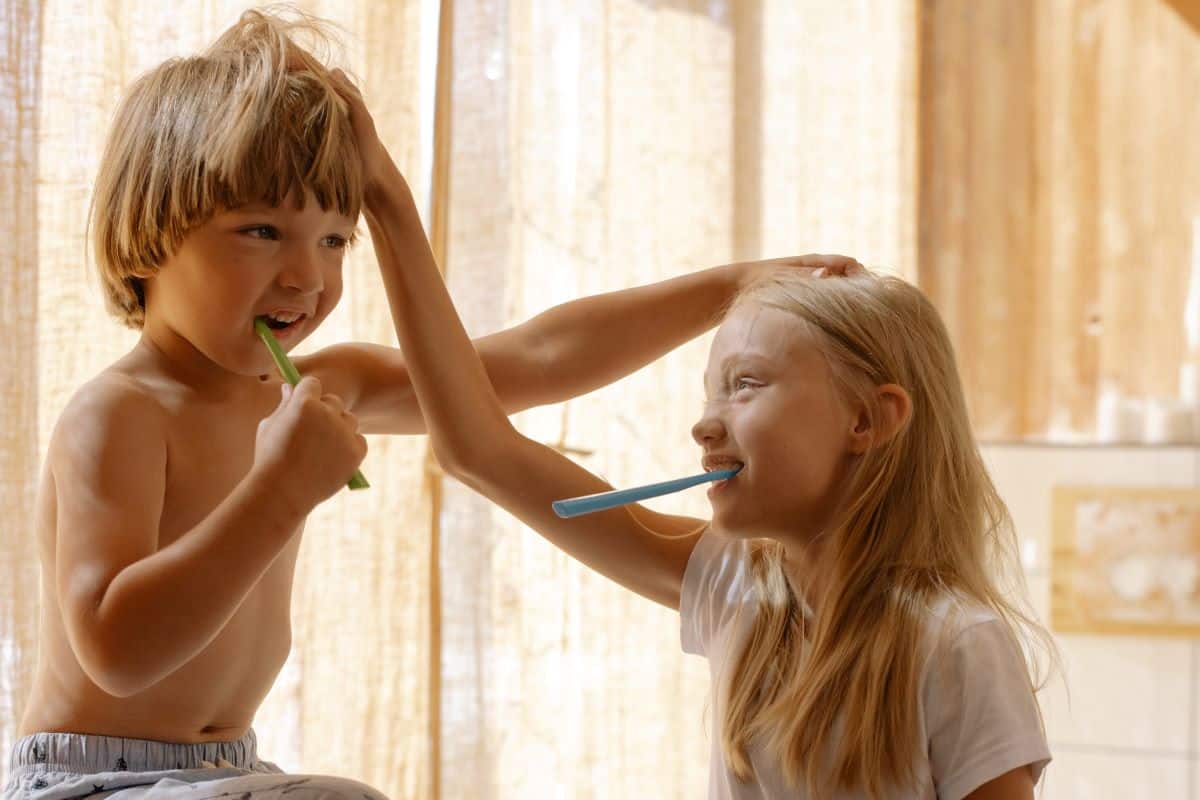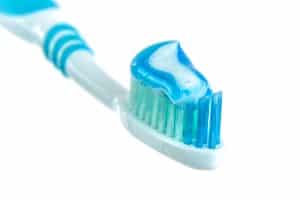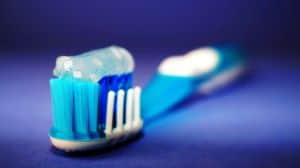
21 Dec What Are the Best Oral Hygiene Practices for Children?
What Are the Best Oral Hygiene Practices for Children?
Optimal oral hygiene practices for children surpasses mere aesthetics; it’s a foundational investment in their overall well-being. Beyond a sparkling smile lies a crucial aspect often overlooked—oral health. Picture a child’s radiant grin as not just a symbol of happiness but also an indicator of robust health. Maintaining healthy teeth and gums in childhood lays the groundwork for a lifetime of wellness, forging a path towards strong permanent teeth and safeguarding against potential systemic health issues in adulthood.
Neglecting oral hygiene practices in early years isn’t just about occasional toothaches; it’s linked to significant health risks later in life. Understanding this connection emphasizes the urgency of instilling robust oral hygiene practices from the start. By cultivating these habits in children, we empower them to take charge of their own health, establishing a foundation for responsible self-care into adulthood.
Importance of Oral Health
Maintaining oral health for children extends far beyond ensuring a sparkling smile; it’s the cornerstone of overall well-being. The long-term impacts of neglecting oral hygiene practices can’t be overstated. Studies reveal a strong link between poor dental health in childhood and various health issues in adulthood, including heart disease and diabetes. Emphasizing preventive measures early on significantly reduces the risk of such complications.
 Setting Oral Hygiene Routines
Setting Oral Hygiene Routines
The cornerstone of oral hygiene practices lies in effective routines. It’s imperative to teach children the correct brushing techniques, including using fluoride toothpaste and brushing for at least two minutes twice a day. Additionally, introducing the importance of flossing, particularly once their teeth are in close proximity, significantly contributes to a comprehensive cleaning routine.
Brushing Twice Daily
Encouraging children to brush their teeth twice a day, ideally in the morning and before bedtime, is fundamental. The use of fluoride toothpaste, in an amount suitable for their age, aids in preventing cavities by strengthening tooth enamel. Teaching them the importance of consistency in brushing routines establishes a habit that they carry into adulthood.
Proper Brushing Technique
The technique used while brushing is as crucial as the frequency. Children should be guided to brush using small circular motions, ensuring coverage of all tooth surfaces, including the fronts, backs, and chewing surfaces. Paying attention to the tongue while brushing is often overlooked but essential, as it harbors bacteria that contribute to bad breath and oral health issues.
Flossing Regularly
Introducing flossing to children once their teeth are in close proximity is pivotal. Initially, assisting them and using child-friendly flossers or soft interdental brushes eases them into the routine. Flossing removes food particles and plaque from areas between teeth where a toothbrush can’t reach, preventing the formation of cavities and gum problems.
Balanced Diet
Emphasizing the impact of diet on oral health is crucial. Encouraging a balanced diet rich in calcium, such as dairy products and leafy greens, aids in strengthening teeth and bones. Limiting sugary snacks and acidic beverages reduces the risk of cavities, fostering an understanding of how food choices impact dental health.
Routine Dental Visits
Scheduling biannual dental visits for routine check-ups and preventive care is paramount. These visits not only ensure the detection of any potential issues at an early stage but also allow for professional cleaning, further reducing the risk of cavities and gum diseases. It’s an opportunity to reinforce the importance of regular dental care.
Fluoride Toothpaste
Choosing toothpaste endorsed by dental associations, containing the appropriate amount of fluoride suitable for the child’s age, is crucial. Fluoride plays a pivotal role in preventing cavities and strengthening tooth enamel. Teaching kids to use only a pea-sized amount and to spit out the excess after brushing ensures they benefit without any risks.

Parental Guidance
Parents play a significant role in shaping children’s oral hygiene practice habits. Leading by example by demonstrating consistent and proper oral care routines creates a positive environment. Making brushing and flossing sessions fun through songs, storytelling, or interactive activities encourages enthusiasm and consistency in oral care.
Overcoming Dental Anxiety
Addressing fears surrounding dental visits is essential. Familiarizing children with the dental environment by visiting beforehand, introducing them to dental tools in a non-threatening manner, and explaining procedures in simple terms can help alleviate anxieties. Employing positive reinforcement and rewards after visits create positive associations and build confidence.
FAQs
How Often Should Kids Visit the Dentist?
Biannual dental visits are the gold standard for maintaining optimal oral health in children. These routine check-ups every six months serve a dual purpose: early detection of potential issues and preventive care. However, certain factors might warrant more frequent visits, such as orthodontic treatments or specific dental concerns. Consulting with a pediatric dentist can help tailor the frequency of visits to a child’s individual needs.
What Toothpaste Is Best for Kids?
The ideal toothpaste for kids is one endorsed by dental associations and containing fluoride. Fluoride plays a pivotal role in preventing cavities and strengthening enamel, offering protection against tooth decay. It’s essential to use toothpaste with the appropriate fluoride concentration based on the child’s age. However, teaching kids to use only a pea-sized amount and to spit out the excess after brushing is equally crucial for their safety.
How Can Parents Encourage Oral Hygiene?
Parents serve as influential role models for their children’s habits, including oral hygiene practices. Leading by example by showcasing consistent and proper oral care routines creates a positive environment. Additionally, making oral care a fun and interactive activity can instill enthusiasm in children. Implementing playful techniques, such as using colorful toothbrushes or introducing entertaining songs during brushing sessions, can make oral hygiene practices an enjoyable part of their daily routine.
When Should Kids Start Flossing?
Introducing flossing when teeth are in close proximity, typically around the ages of 2 to 3, is recommended. Initially, using child-friendly flossers or soft interdental brushes can aid in the process. Parents should supervise and assist until children develop the dexterity to floss independently. Flossing helps remove plaque and food particles from areas toothbrushes can’t reach, promoting comprehensive oral cleanliness and preventing cavities between teeth.

What Role Does Diet Play in Oral Health?
Diet plays a significant role in shaping oral health. A balanced diet rich in nutrients, particularly calcium, contributes to strong teeth and gums. Foods high in calcium, like dairy products and leafy greens, aid in enamel fortification. Conversely, excessive consumption of sugary snacks and acidic beverages heightens the risk of cavities. Encouraging a diet low in sugar and high in tooth-friendly foods nurtures healthy teeth and supports overall oral well-being.
How Can Kids Overcome Fear of Dentists?
Fears surrounding dental visits are common among children and can persist into adulthood if not addressed early. Familiarizing children with the dental environment by visiting the clinic beforehand, introducing them to dental tools in a non-threatening manner, and explaining procedures in simple terms can help alleviate anxieties. Employing positive reinforcement, like praising bravery or rewarding after visits, instills confidence and gradually diminishes their fear of dentists.
What Should Parents Do in a Dental Emergency?
In a dental emergency, swift action is crucial. If a child experiences a dental injury, such as a knocked-out tooth or severe toothache, parents should remain calm and take immediate steps. In the case of a knocked-out permanent tooth, gently rinse the tooth without scrubbing its root, if dirty, and try to reinsert it into the socket. If that’s not feasible, place the tooth in milk or a tooth preservation solution and seek emergency dental care. For severe toothaches or injuries, contacting a pediatric dentist or seeking urgent dental care promptly is essential to prevent further complications.
In Conclusion
Oral hygiene practices for children is more than a bright smile; it’s a foundation for lifelong health. Routine dental visits, fluoride-rich toothpaste, and introducing enjoyable oral care routines are pivotal. Yet, beyond the technicalities lies parental guidance, steering habits into everyday life. Balanced diets with tooth-friendly foods fortify teeth, while addressing fears surrounding dental visits builds confidence. Each aspect of childhood oral hygiene practices contributes to a masterpiece—cultivating habits that not only ensure healthy smiles but also instill a profound understanding of holistic health and self-care in the next generation.


Sorry, the comment form is closed at this time.